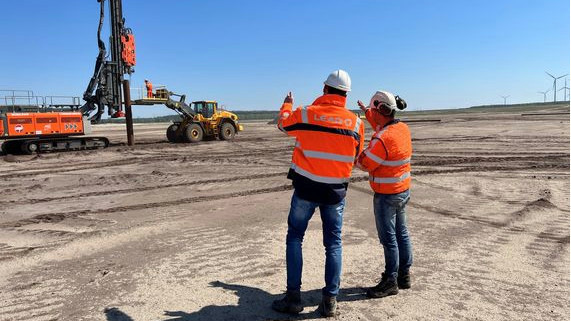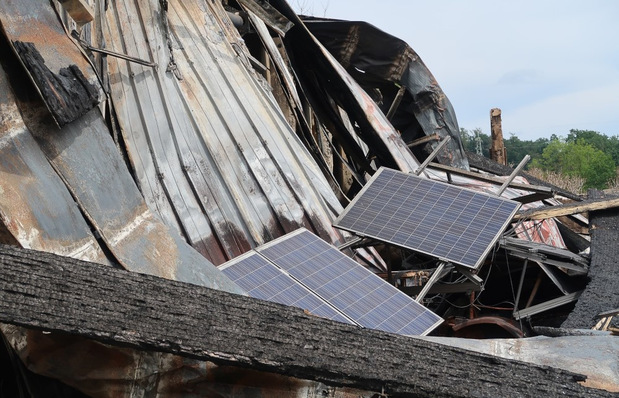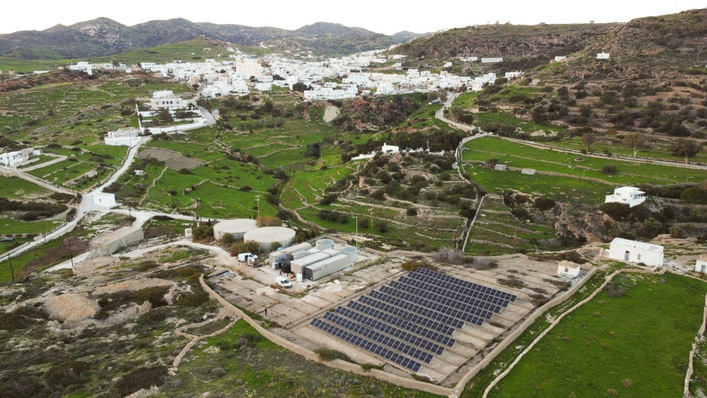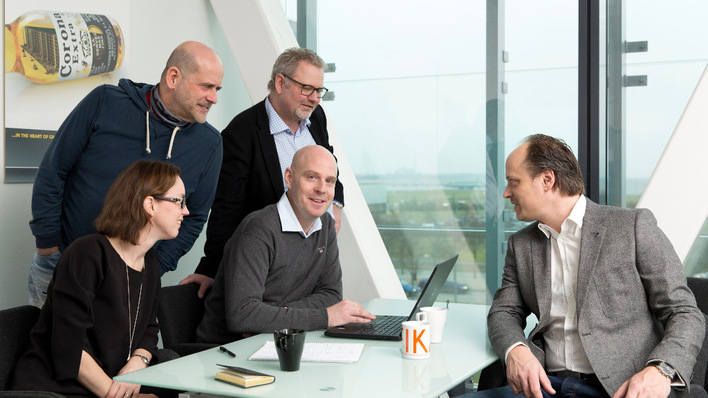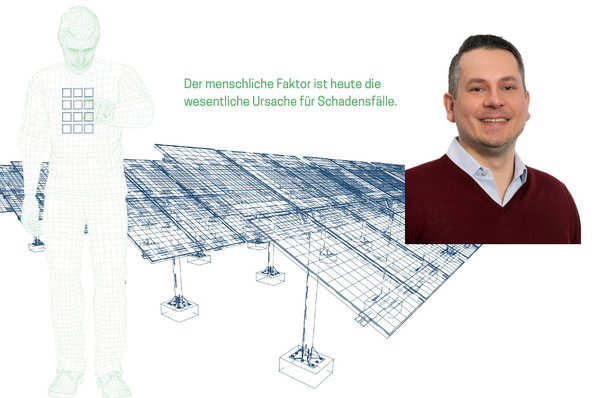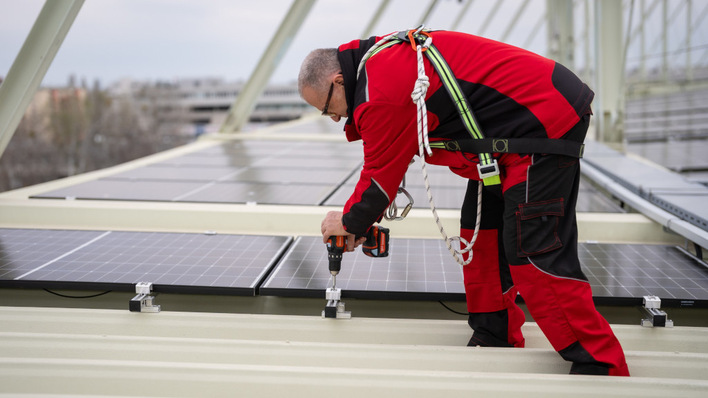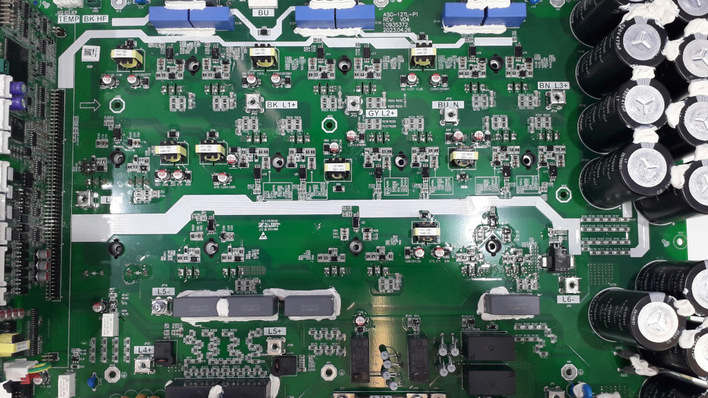It is still a wasteland that resembles a moonscape. But in just a few years, a huge lake is to be created here. We are talking about a former open-cast mine, just ten kilometres east of Cottbus. But even before that, the Berlin project developer EP News Energies (EPNE) is building a large solar plant here on behalf of LEAG, which will float on the lake.
Technology from the shipping industry
EPNE is using a new technology for this. It will be moored to so-called dolphins. These are piles driven into the ground that are actually used in bridge building and shipping. Among other things, sea bridges are anchored to dolphins, which have to adapt flexibly to the water level. In shipping, they are used to moor ships. Such dolphins are driven into the seabed or harbour bottom. On the Cottbus East Lake, the module arrays are attached to 15-metre-long dolphins that are anchored in the compacted open-cast mine floor. "Cottbus East Lake is also a highlight from a project development point of view," emphasises Dominique Guillou, Managing Director of EPNE. "The plant is built on the dry lake bottom and then floats up as the water level rises. This is unprecedented and the reason for the innovative anchoring system."
See also: RWE commissions its first floating solar plant
The advantage of the method is the low-maintenance anchoring due to fewer necessary anchors and the elimination of a large number of anchor chains, which would have to be readjusted as the water level rises and falls. The EPNE attaches almost 1,900 floats to 34 dolphins, on which about 51,000 solar modules are mounted.
Increased output
The plant should fit in well with the overall appearance of the lake and also be in harmony with the tourist use, Guillou explains. "We attached great importance to this during the planning. After two years of intensive planning and a very good cooperation with all stakeholders, we are happy that it is now starting the realisation phase." That is why, at 16 hectares, less than one per cent of the future water area will be used for photovoltaics. After all, the lake is to cover around 1,900 hectares in the end. In the course of the project development, LEAG and EPNE were able to increase the output of the floating solar plant from the previously envisaged 21 to 29 megawatts. This increases the projected annual electricity yield to 29,000 megawatt hours.
Preserving the energy region
In fact, the lake and the plant are part of Lusatia's structural change strategy. On the one hand, the region, which until now has been dominated by coal-fired power generation, can give itself a perspective even after the coal phase-out. On the other hand, it can remain a centre of energy production in eastern Germany - just now with renewable energies. "Germany's largest floating solar plant on the largest post-mining lake stands for the future use of the unique land potential of this region. This project is part of our transformation project Gigawattfactory, with which we want to turn Lusatia into a green powerhouse," says Thorsten Kramer, Managing Director of LEAG.
Starting point for further projects
The plant is intended to be a starting point for further renewable projects in the area around the lake, he says. "With a combination of floating PV, wind power and lake thermal energy, Cottbus East Lake is rising to become a model region for sustainable energy supply," Kramer outlines the goal. "We are daring to do something new. And we're doing it together in the region. And so Cottbus remains the city of energy and Lusatia an energy region at the highest and most promising level. This is a pound of structural change that needs and will get a secure, stable and green supply of energy," adds Cottbus Mayor Tobias Schick.
Removing regulatory hurdles
In fact, there is still plenty of room for plenty of green energy here - both with photovoltaics and wind power. In addition, there is the existing infrastructure, which is designed for large-scale power plants and which can also absorb the electricity. Fraunhofer ISE confirmed enormous potentials for photovoltaic use of up to 2.74 gigawatts for the areas on mining lakes in former coalfields, even taking into account parallel use aspects.
Also interesting: More solar factories and more production in Europe and Germany
"However, investment incentives would have to be created through innovation tenders, as the investment costs for floating solar power plants are higher than for conventional ground-mounted photovoltaic plants," warn the project participants. "With the removal of regulatory hurdles, as well as the classification of opencast lakes as conversion areas in the Renewable Energy Sources Act, the technology could contribute significantly to the federal government's expansion targets." (su/mfo)


